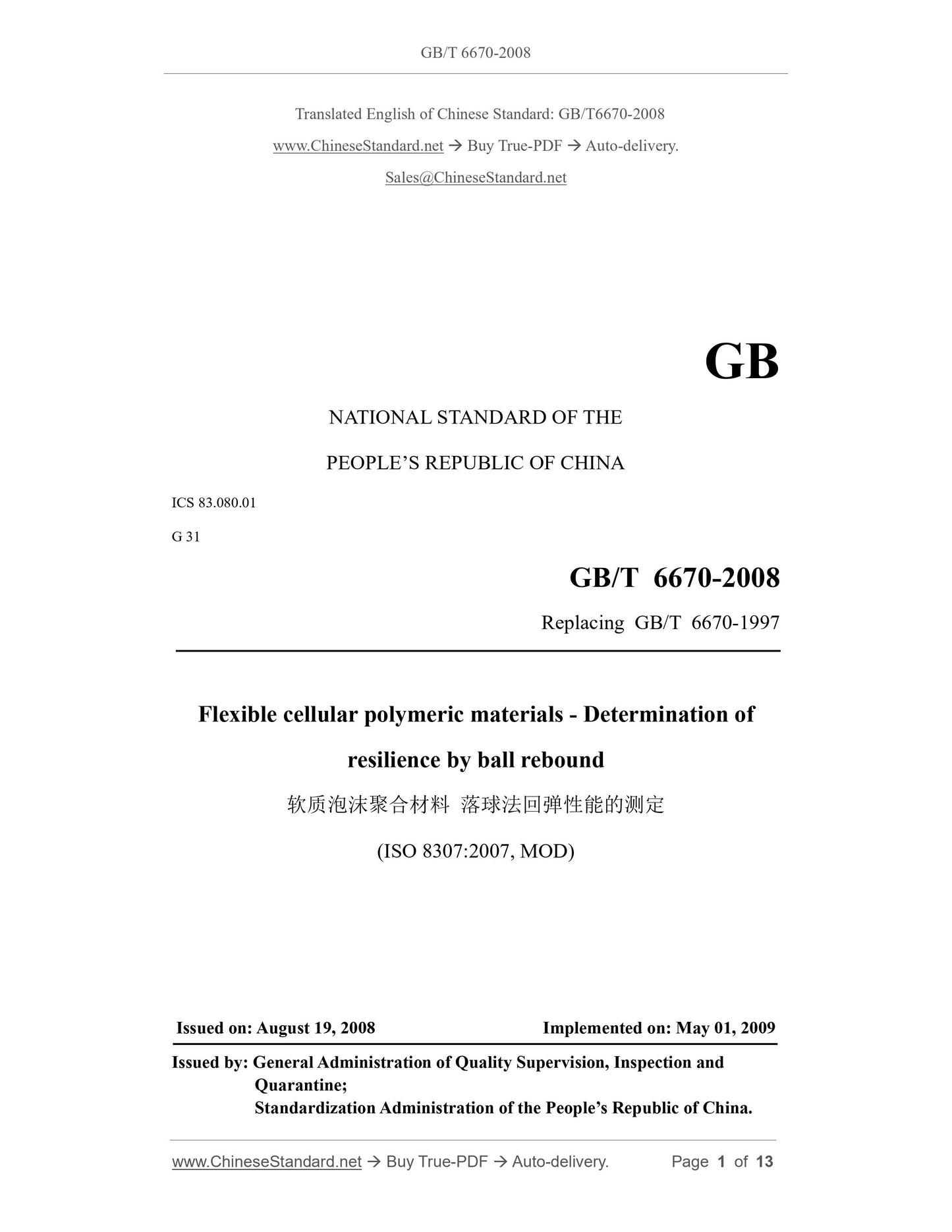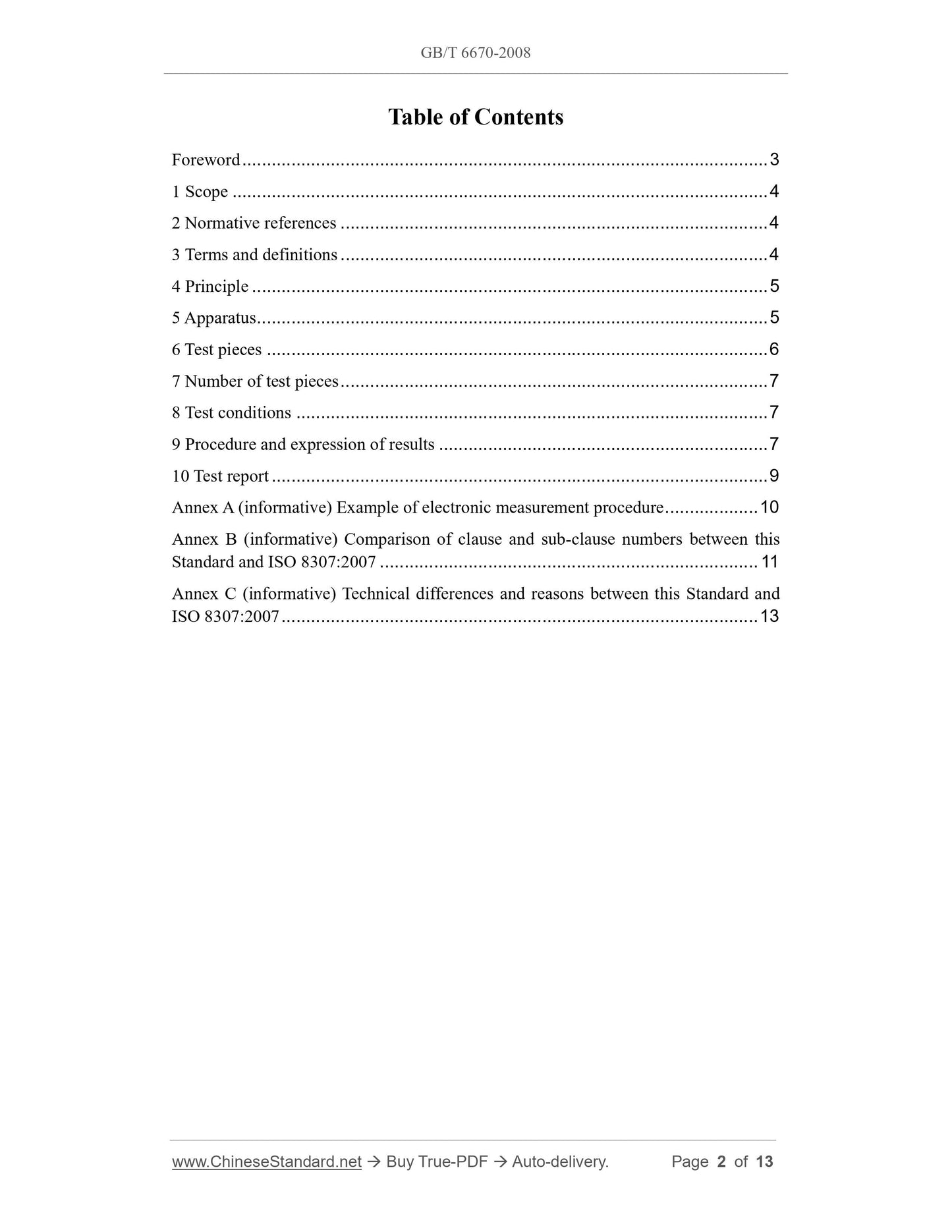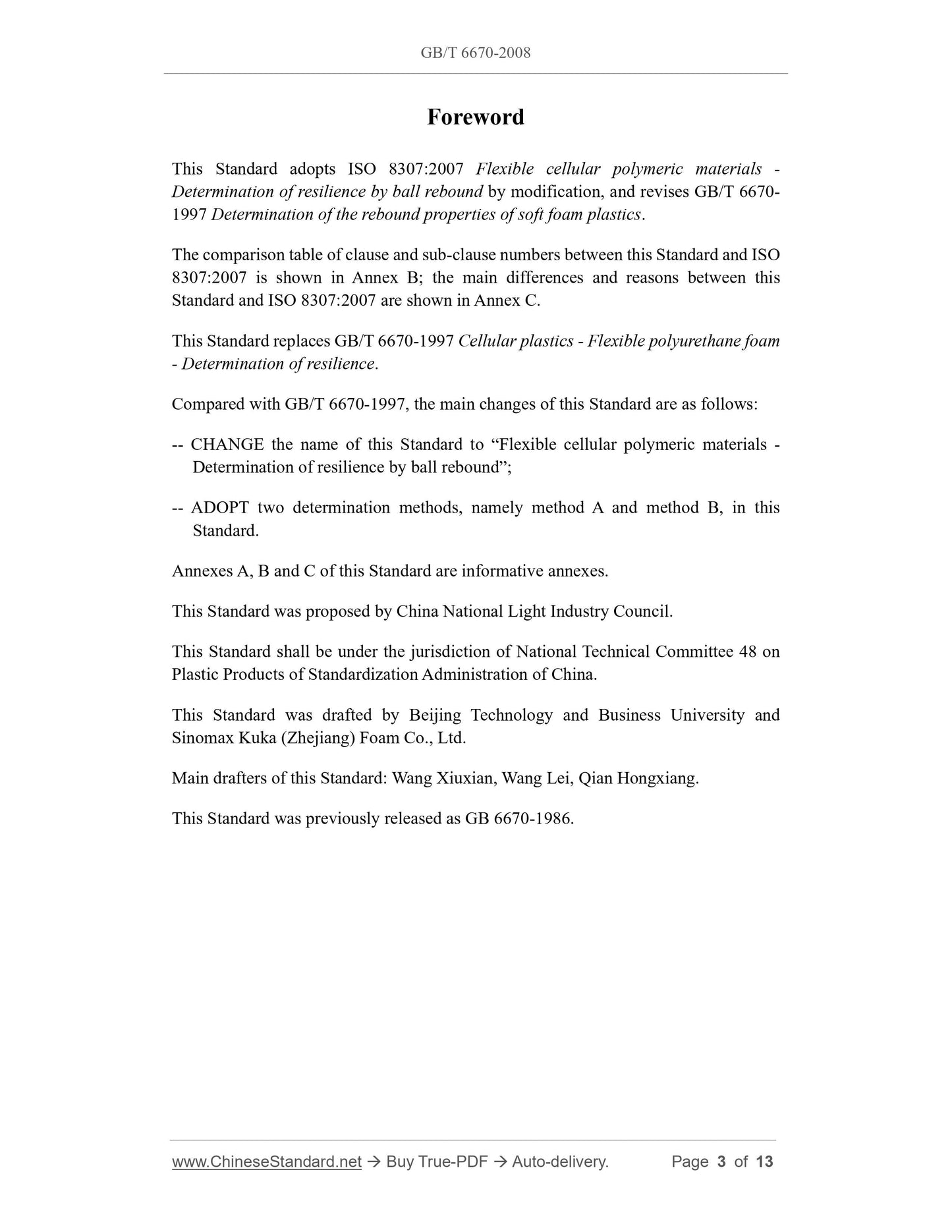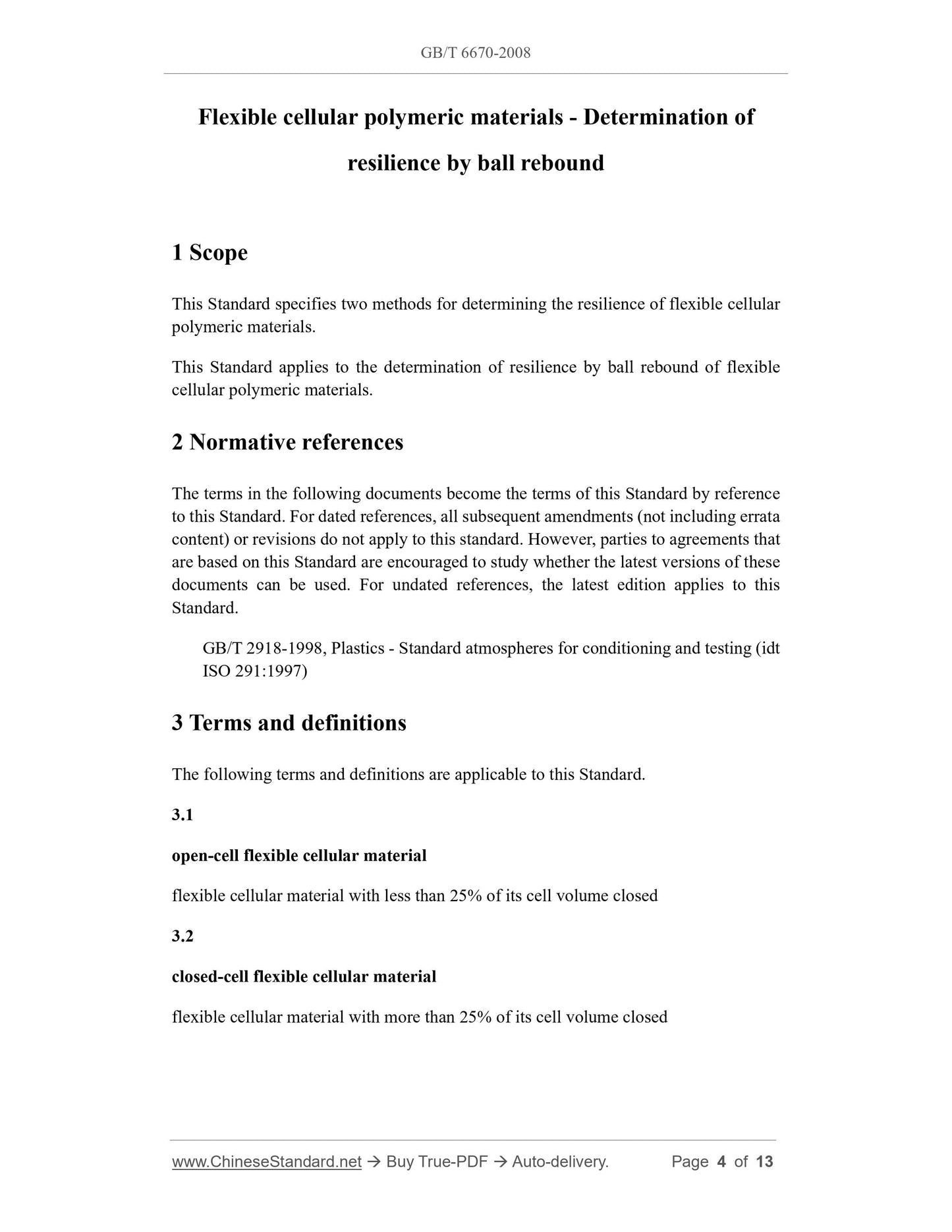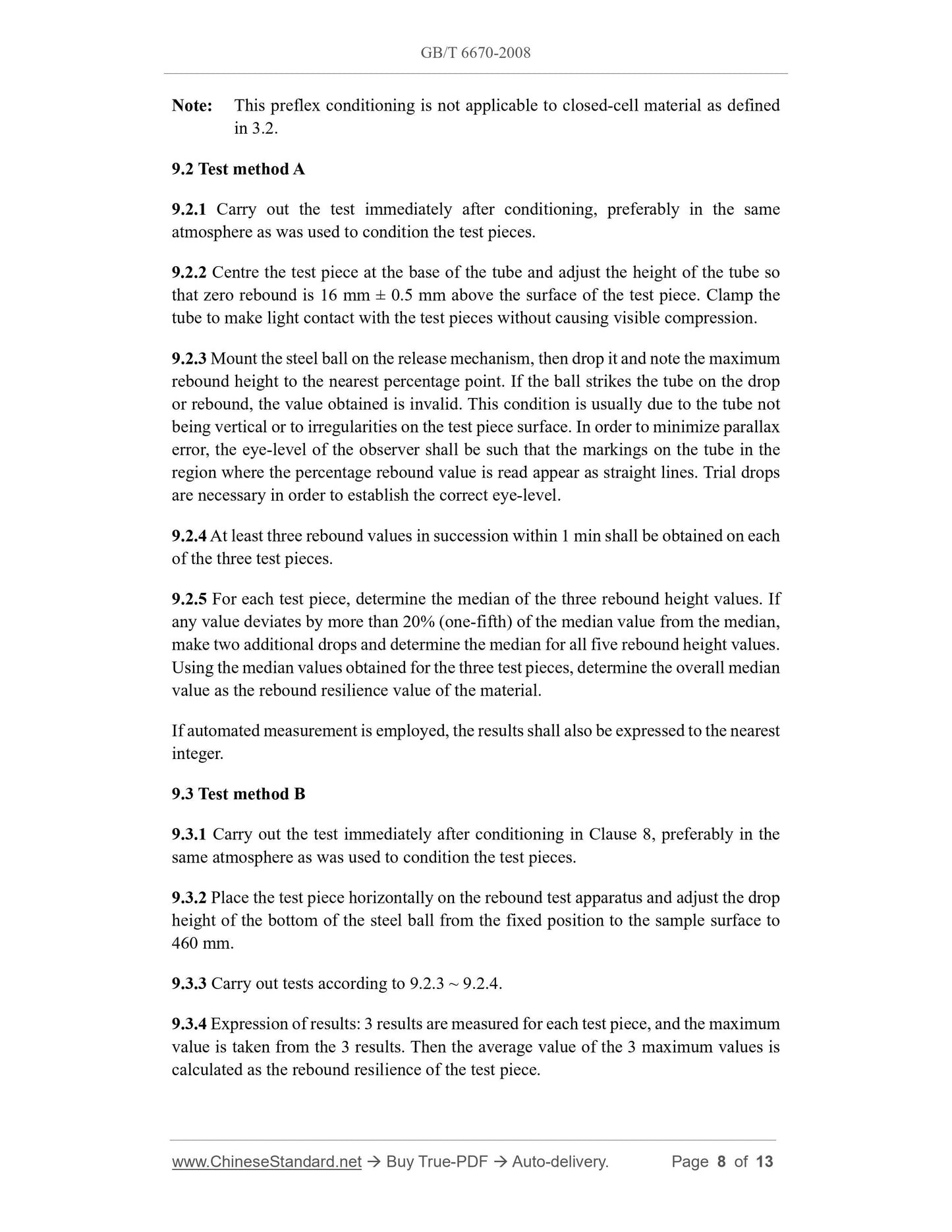1
/
of
5
www.ChineseStandard.us -- Field Test Asia Pte. Ltd.
GB/T 6670-2008 English PDF (GB/T6670-2008)
GB/T 6670-2008 English PDF (GB/T6670-2008)
Regular price
$155.00
Regular price
Sale price
$155.00
Unit price
/
per
Shipping calculated at checkout.
Couldn't load pickup availability
GB/T 6670-2008: Flexible cellular polymeric materials -- Determination of resilience by ball rebound
Delivery: 9 seconds. Download (and Email) true-PDF + Invoice.Get Quotation: Click GB/T 6670-2008 (Self-service in 1-minute)
Newer / historical versions: GB/T 6670-2008
Preview True-PDF
Scope
This Standard specifies two methods for determining the resilience of flexible cellularpolymeric materials.
This Standard applies to the determination of resilience by ball rebound of flexible
cellular polymeric materials.
Basic Data
| Standard ID | GB/T 6670-2008 (GB/T6670-2008) |
| Description (Translated English) | Flexible cellular polymeric materials -- Determination of resilience by ball rebound |
| Sector / Industry | National Standard (Recommended) |
| Classification of Chinese Standard | G31 |
| Classification of International Standard | 83.080.01 |
| Word Count Estimation | 9,997 |
| Date of Issue | 2008-08-19 |
| Date of Implementation | 2009-05-01 |
| Older Standard (superseded by this standard) | GB/T 6670-1997 |
| Quoted Standard | GB/T 2918-1998 |
| Adopted Standard | ISO 8307-2007, MOD |
| Regulation (derived from) | National Standard Approval Announcement 2008 No.14 (Total No.127) |
| Issuing agency(ies) | General Administration of Quality Supervision, Inspection and Quarantine of the People's Republic of China, Standardization Administration of the People's Republic of China |
| Summary | This standard specifies the determination of soft foam polymeric material rebound performance in two ways. This standard applies to the determination of polymeric materials soft foam ball rebound performance. |
Share
